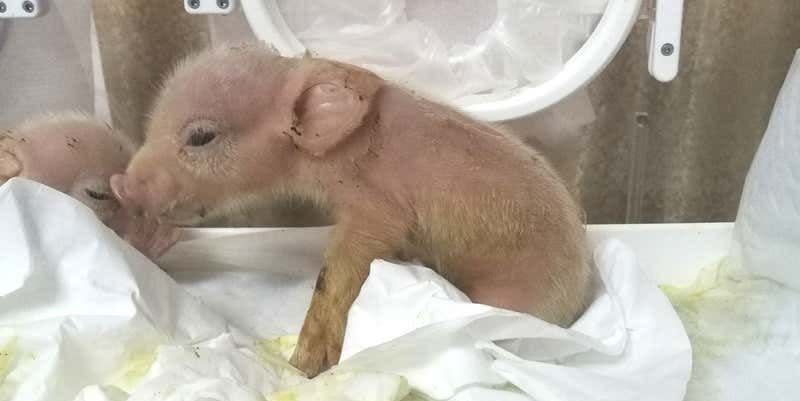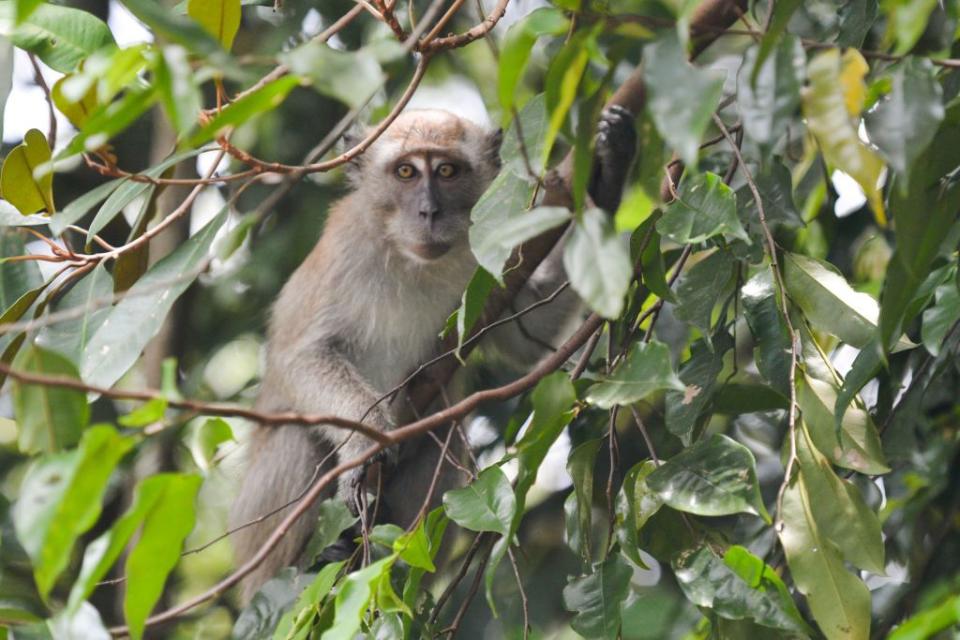Two Pigs with Monkey Cells Born in China

In China, two pigs with monkey cells were born after researchers genetically modified cynomolgus monkey cells in vitro. The research was published in the scientific journal Protein & Cell.
After just a week, the chimera pigs (and their eight regular pig siblings) died of unknown causes.
Researchers at the State Key Laboratory of Stem Cell and Reproductive Biology in Beijing are planning to try this again with more monkey cells. The end goal is to grow human organs inside animals for use in transplants.
For the first time ever, two pigs with monkey cells were born in China after researchers genetically modified cynomolgus monkey cells in culture. The resulting chimera monkey-pigs—which are new animals with cells from the two distinct animals—lived for just a week.
"This is the first report of full-term pig-monkey chimeras,” Tang Hai, one of the researchers who worked on the pigs at the State Key Laboratory of Stem Cell and Reproductive Biology in Beijing, told New Scientist.
Earlier this year, Japanese scientists got the go-ahead to grow a human pancreas in a rat, which marks a huge step forward in the study of chimeras, or organisms that possess cells from at least two distinct species. These genetic hybrids are being tested because the end goal is to grow whole human organs inside other animals that can then be transplanted into humans.
In the case of the monkey-pigs, researchers genetically modified the monkey cells in vitro so that they created a protein called GFP. It glowed fluorescent and allowed the scientists to track the monkey cells and any descendent cells. Then, the team was able to isolate embryonic stem cells, which were implanted into the pig embryos five days after fertilization.

In total, 4,000 of the embryos were implanted in female pigs, or sows. Ten piglets were born thereafter and two of them were chimeric, containing monkey cells. In the chimeras, heart, liver, spleen, lung and skin tissue partly contained monkey cells, though the proportions were low, at between one in 1,000 and one in 10,000.
After just a week, all of the piglets died, regardless of whether or not they were chimeras. The researchers say that although it's unclear why the pigs died, it's likely due to complications of the in vitro fertilization (IVF) process and not the chimerism. That's because IVF doesn't work as well in pigs as it does in humans and other animals.
Next, the research team will try to create healthy animals with an even higher proportion of monkey cells, according to Hai. If that works, they'll try to create pigs that are born with a whole organ composed of primate cells.
Of course, that's easier said than done. Back in 2017, another research team in California successfully created pig-human chimeras, but just about one in every 100,000 cells was human. And, for ethical reasons, the embryos only developed for one month because there was concern that the brains could be part-human.
And then there are the critics. Paul Knoepfler, a stem cell biologist at the University of California, Davis, believes it's impossible to grow human organs suitable for transplant in human-animal chimeras.
"Given the extremely low chimeric efficiency and the deaths of all the animals, I actually see this as fairly discouraging," Knoepfler said.
Source: New Scientist
You Might Also Like

